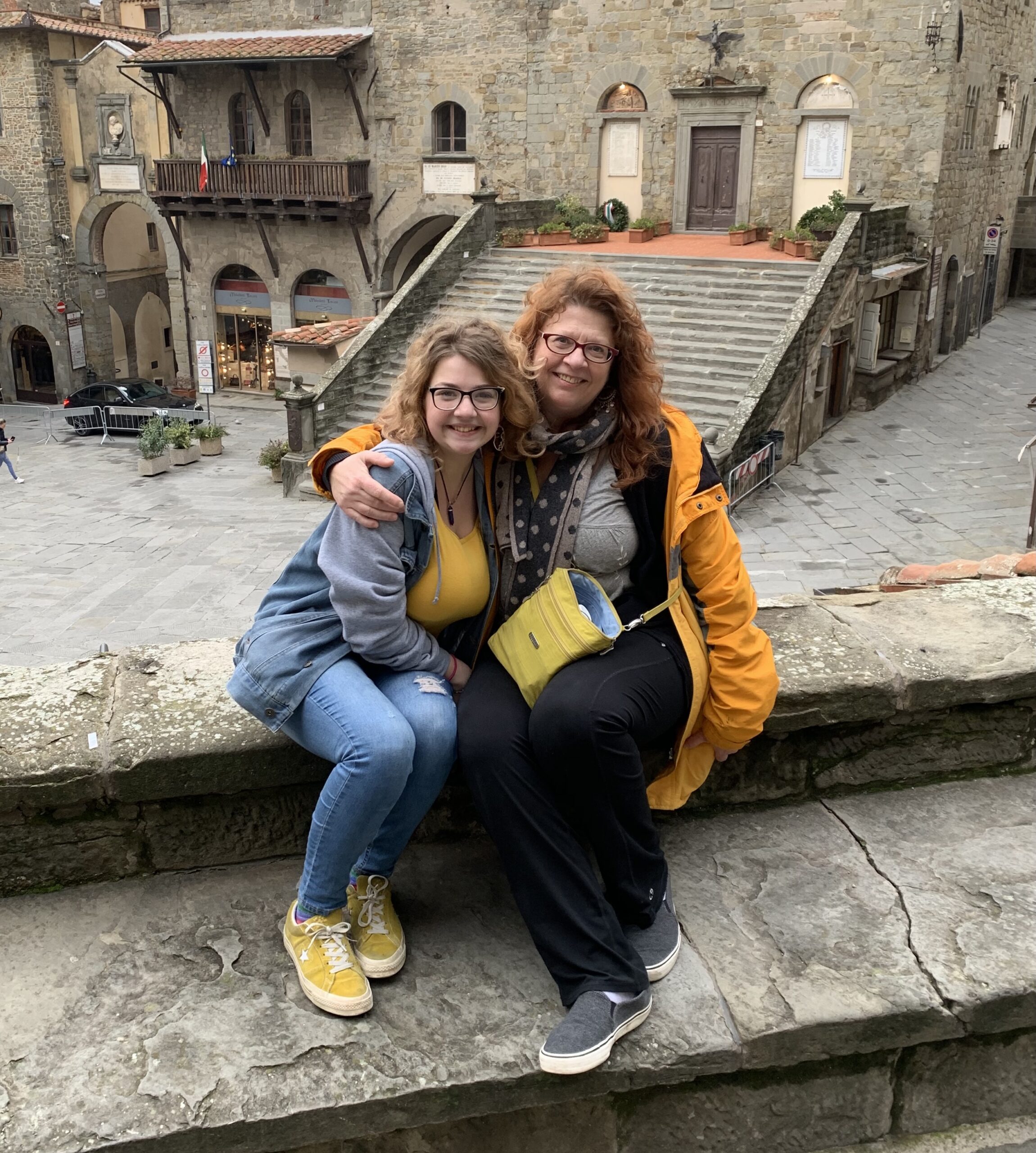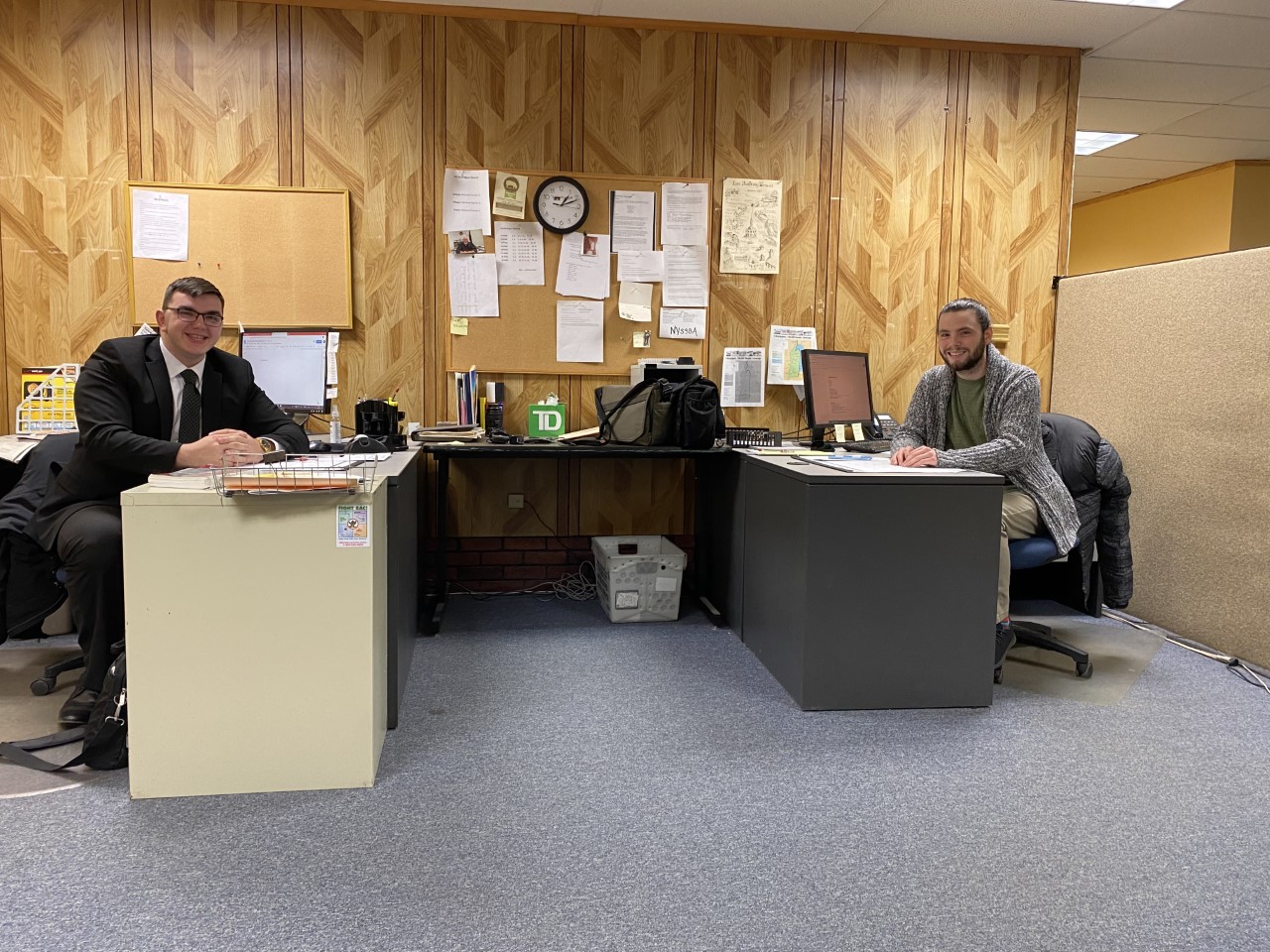More to be seen behind the scenes
The front lobby of the Castleton State Fine Arts Center is a haven for any fan of art and music. Student artwork is displayed along the walls of the vast, open lobby. The smell of oil paints and the faint sound of a piano greet those who walk through the front door. It is a serene place, peaceful. But beyond the back stairs, it’s a whole different scene. Behind the art department, down the stairs, and past the stage, any wayward wanderer is struck by the immediate scent of wood.
More prominent is the screeching of drills, the pounding of hammers, and the high pitched buzzing saws.
In this large, bright room, in the back of the FAC, Steven Gross gives his stage craft students the chance to build and create something that won’t appear on display in mom’s living room, but for the entire community. His classes are responsible for all of the artwork set behind the actors of all the Castleton State performances.
Gross, in his second year at Castleton, teaches in a very indirect, but effective, way. Students take on a task, whether building stairs that lead to nowhere or doors that open to a wall. Gross lays a blueprint on the work table in the middle of the room that students refer to. Then they get to work under the light blurred by sawdust. As his students hammer away, Gross observes, allowing them all to take care of their own individual projects that will merge, in the end, into an expanding scene. He walks around giving advice where he sees necessary and help when it is asked, but does not take on a project for the students.
“My biggest job is organizing students into workable groups,” said Gross. “Then they build the sets.”
Currently, the class is working on sets for the upcoming show, “You Can’t Take It with You,” written by George S. Kaufman in the 1930’s. This production will be Gross’ fifth set designed and built here at Castleton. Others include Big Love, Once On This Island, Lost in Yonkers, and most recently, Philadelphia, Here I Come!
This time he is going beyond sets. Gross is also the scene designer and technical director. He is also taking on a role.
“I am Boris Kolenkhov,” he said with a grin.
His character is a loud, eccentric, Russian dance instructor.
But for now, Kolenkhov will have to wait. Sets for the show must be completed by Friday. But progress is quite obvious. The stage, connected to the building room, is bustling with activity, but not the kind an audience ever gets to witness. A large platform takes up the middle of the stage, with students on top of it, underneath it. Other students bring out doors.
Mykael Harrigan and Louis Riquellme work on a set of steps and point out their area on the blue print that must be finished by the end of the week.
“We have to work wicked hard all class,” said Harrigan. “We take attendance and get right to work.”
Clearly, there is no time for anything other than work. However, students seem to enjoy themselves and each other. They are there to support one another as well. Advice can be heard shouted over the steady noise in the room, but the smiles are clearly visible.
“They’re excellent,” Gross proudly said of his students.
After class concludes, Gross changes hats several times as he directs lights, sounds, and his greatest challenge for this production: props.
“This show in particular is very prop-oriented,” Gross said. “It’s very specific to the 1930 time period.”
The list of props in a play generally can be written in two pages of the director’s guide. In ‘You Can’t Take It With You,’ the list carries on for six pages and is very specific. The table must have seven plates, seven forks, and seven knives as well as a platter of spaghetti. The desk is even more specific, decked out with a skull made of Plaster of Paris, a typewriter, and a candy dish. Usually, a performance will have only one person working on props, this performance has five people.
Gross said he’s done this enough times where he feels little pressure. He leaned back in his chair, calmly, explaining that he really believes that with such an excellent group of students and a great cast, the show will come together without a hitch.
“Everyone’s working really hard,” he said. “It’s a fun show to work on. I think people will really enjoy it.





